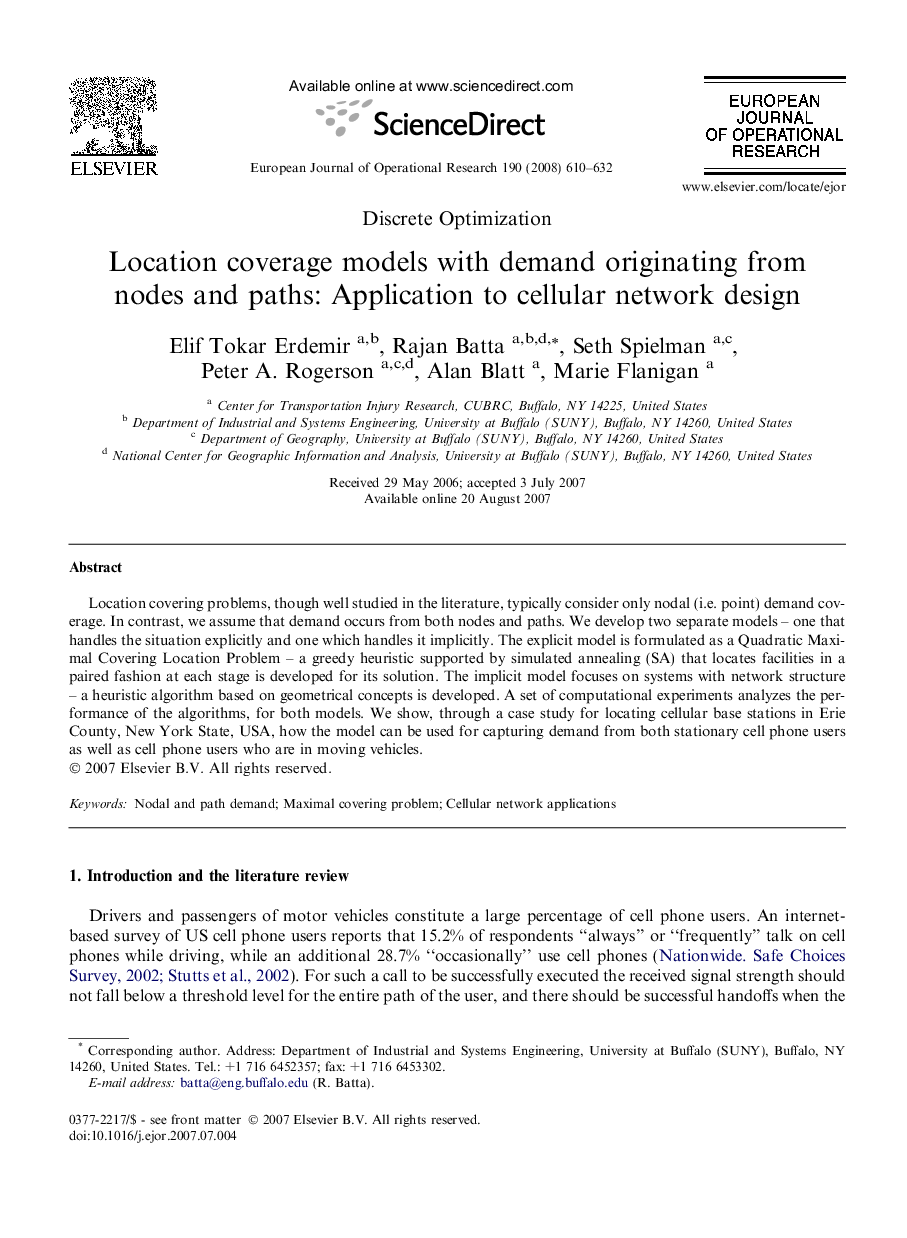| Article ID | Journal | Published Year | Pages | File Type |
|---|---|---|---|---|
| 482790 | European Journal of Operational Research | 2008 | 23 Pages |
Location covering problems, though well studied in the literature, typically consider only nodal (i.e. point) demand coverage. In contrast, we assume that demand occurs from both nodes and paths. We develop two separate models – one that handles the situation explicitly and one which handles it implicitly. The explicit model is formulated as a Quadratic Maximal Covering Location Problem – a greedy heuristic supported by simulated annealing (SA) that locates facilities in a paired fashion at each stage is developed for its solution. The implicit model focuses on systems with network structure – a heuristic algorithm based on geometrical concepts is developed. A set of computational experiments analyzes the performance of the algorithms, for both models. We show, through a case study for locating cellular base stations in Erie County, New York State, USA, how the model can be used for capturing demand from both stationary cell phone users as well as cell phone users who are in moving vehicles.
